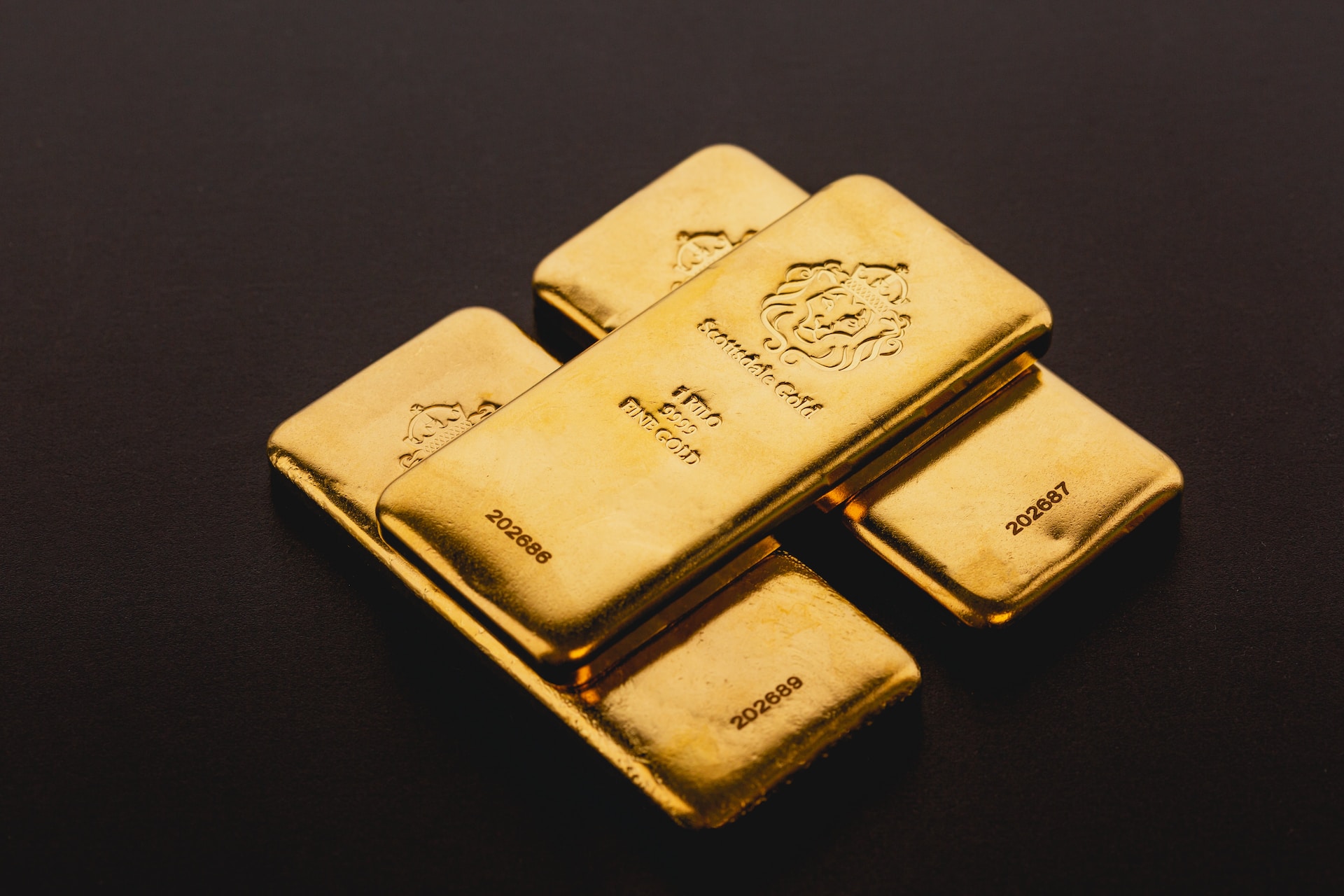Gold, with its timeless allure and intrinsic value, has captivated investors for centuries. Whether you’re a seasoned investor or a beginner looking to diversify your portfolio, understanding how to invest in gold can be a valuable asset. This article is about gold investing, providing you with the knowledge and tools necessary to make informed decisions.
Reasons to Invest in Gold
1. Hedge Against Inflation
Gold has historically been a hedge against inflation. As the value of paper currencies declines over time, gold’s purchasing power tends to hold steady or even increase.
2. Portfolio Diversification
Gold has a low correlation with traditional assets like stocks and bonds. By including gold in your portfolio, you can potentially reduce overall risk and increase diversification.
3. Safe-Haven Asset
During times of economic and political uncertainty, gold often serves as a safe-haven asset. Investors turn to gold as a store of value when other markets experience volatility.
4. Long-Term Store of Value
Gold has stood the test of time and has maintained its value over the long term. It has outlasted numerous economic crises and has been recognized as a reliable store of value.
Different Ways to Invest in Gold
When it comes to investing in gold, there are several options to consider. Each method has its own advantages, and the choice depends on your investment goals, risk tolerance, and preferences. Let’s explore the different ways you can invest in gold.

1. Physical Gold
Investing in physical gold involves purchasing gold coins, bars, or jewelry. These tangible assets offer direct ownership and can be stored in a safe deposit box or a secure facility.
2. Gold Exchange-Traded Funds (ETFs)
Gold ETFs are investment funds that trade on stock exchanges. They aim to track the price of gold by holding the metal or derivatives. Investing in gold ETFs provides exposure to gold without the need for physical storage.
3. Gold Mutual Funds
Gold mutual funds invest in stocks of gold mining companies or other related assets. They provide exposure to the gold industry and can be an indirect way to invest in gold.
4. Gold Futures and Options
Gold futures and options contracts allow investors to speculate on the price of gold without owning the physical metal. These derivative products involve higher risk and require a deeper understanding of the market.
5. Gold Mining Stocks
Investing in gold mining stocks involves buying shares of companies engaged in gold exploration, extraction, and production. The performance of these stocks can be influenced by factors beyond the price of gold, such as company management and operational efficiency.
6. Gold Accumulation Plans
Some financial institutions offer gold accumulation plans where investors can regularly contribute funds to purchase gold at prevailing market prices. This method allows for gradual accumulation over time.
Factors to Consider Before Investing
Before diving into gold investments, it’s important to consider several factors to make the most informed choices. Take the following aspects into account.

1. Financial Goals
Determine your financial goals and evaluate how gold aligns with them. Are you aiming for long-term wealth preservation, short-term gains, or diversification?
2. Risk Tolerance
Assess your risk tolerance and understand the potential risks associated with gold investments. Gold prices can be volatile, and understanding your comfort level with market fluctuations is essential.
3. Investment Horizon
Consider your investment horizon or the length of time you plan to hold your gold investments. Different investment strategies are suitable for short-term or long-term goals.
4. Market Conditions
Stay informed about the current market conditions and how they might impact gold prices. Factors like economic indicators, geopolitical events, and monetary policies can influence the value of gold.
5. Storage and Security
If you choose to invest in physical gold, evaluate the logistics of storage and security. Ensure you have a safe place to store your gold assets and consider insurance options if necessary.
6. Transaction Costs
Be aware of the transaction costs associated with different investment methods. Consider factors such as dealer premiums, commissions, management fees, and potential tax implications.
7. Exit Strategy
Have an exit strategy in place before making your investment. Determine the circumstances under which you would sell your gold assets and how you would execute the sale.
Steps To Invest in Gold

1. Determine Your Investment Goals and Risk Tolerance
Before investing in gold, it’s crucial to define your investment objectives. Are you looking for long-term wealth preservation, hedging against inflation, or capital appreciation? Understanding your goals will help shape your investment strategy. Additionally, assess your risk tolerance to determine the amount of gold exposure you’re comfortable with.
2. Educate Yourself about Gold
To make informed investment decisions, educate yourself about the gold market. Understand the factors that influence gold prices, such as economic indicators, geopolitical events, and central bank policies. Stay updated with the latest market trends and developments to identify potential opportunities.
3. Decide on the Method of Investment
Based on your investment goals and risk tolerance, choose the most suitable method of investing in gold. Consider factors like liquidity, storage requirements, transaction costs, and ease of access when making your decision.
4. Research and Select a Reputable Gold Dealer or Broker
If you decide to invest in physical gold or gold coins, conduct thorough research to find a reputable gold dealer or broker. Look for established businesses with a track record of customer satisfaction and transparent pricing. Seek recommendations from trusted sources and read reviews to ensure you’re dealing with a reliable provider.
5. Create a Budget and Allocate Funds
Establish a budget for your gold investments and allocate funds accordingly. It’s advisable to diversify your investments and not allocate all your resources to a single asset class. Determine the percentage of your portfolio you want to allocate to gold and adjust it periodically as your financial situation and investment goals evolve.
6. Make the Purchase
Once you’ve chosen your preferred method of investment and selected a reputable dealer or broker, it’s time to make your purchase. Follow the instructions provided by the dealer or broker for a smooth transaction. If you’re buying physical gold, consider the logistics of storage and security.
7. Monitor Your Investments
After investing in gold, monitor your investments regularly. Keep track of gold prices, market trends, and any relevant news or events that may impact the value of your investment. Consider setting up alerts or using investment tracking tools to stay informed.
8. Review and Rebalance Your Portfolio
Periodically review your investment portfolio and reassess your allocation to gold. As market conditions change, rebalancing your portfolio ensures that your investments align with your goals and risk tolerance. Consult with a financial advisor if needed to make informed decisions.
Conclusion
Investing in gold can be a valuable addition to your investment portfolio, offering potential benefits like a hedge against inflation, portfolio diversification, and a safe-haven asset. By understanding the different methods of investing in gold, conducting thorough research, and considering your investment goals and risk tolerance, you can make informed decisions in this fascinating and dynamic market.

